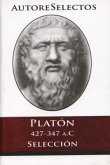Esta obra central en el universo benjaminiano se empezó a escribir en los años treinta del pasado siglo como contrapeso al mítico (y extrañado) proyecto del Libro de los Pasajes y al ascenso de los nazis al poder. Benjamin se torna a mirar su propia infancia: el nacimiento del «apetito de historias' en un niño enfermizo. No obstante, influido por Proust (de quien fue traductor), el autor alcanza una resonancia mayor y le devuelve su libertad fundacional a la forma ensayística: capta la compleja trama de temporalidades que nos conforma, la resistencia del pasado a marcharse y su promesa de futuro. Con un acercamiento detallista y ensoñado, Benjamin observa un teléfono, un costurero o un parque en medio de la ciudad, y extrae de ellos el fundamento de la imaginación infantil, la magia de un pensar en imágenes, porque este libro es un mapa de la ciudad y un manual de instrucciones de la infancia en un momento en que ambas, ciudad y niñez, han desaparecido. Sin embargo, como siempre en Benjamin, lo extinguido adquiere una súbita modernidad. Y su mirada, entrenada en el arte de la espera, se transforma en una cartografía de los sueños contemporáneos. > This central work in the Benjaminian universe began to be written in the 1930s as a counterweight to the mythical (and missed) project of the Book of Passages and the rise of the Nazis to power. Benjamin turns to look at his own childhood: the birth of the "appetite for stories" in a sickly child. However, influenced by Proust (of whom he was a translator), the author reaches a greater resonance and returns his foundational freedom to the essay form: he captures the complex web of temporalities that shapes us, the resistance of the past to leave and its promise of future. With a detailed and dreamy approach, Benjamin observes a telephone, a sewing shop or a park in the middle of the city, and extracts from them the foundation of children's imagination, the magic of thinking in images, because this book is a map of the city and a childhood instruction manual at a time when both city and childhood have disappeared. However, as always in Benjamin, the extinct acquires a sudden modernity. And his gaze, trained in the art of waiting, is transformed into a cartography of contemporary dreams.
Hinweis: Dieser Artikel kann nur an eine deutsche Lieferadresse ausgeliefert werden.
Hinweis: Dieser Artikel kann nur an eine deutsche Lieferadresse ausgeliefert werden.








